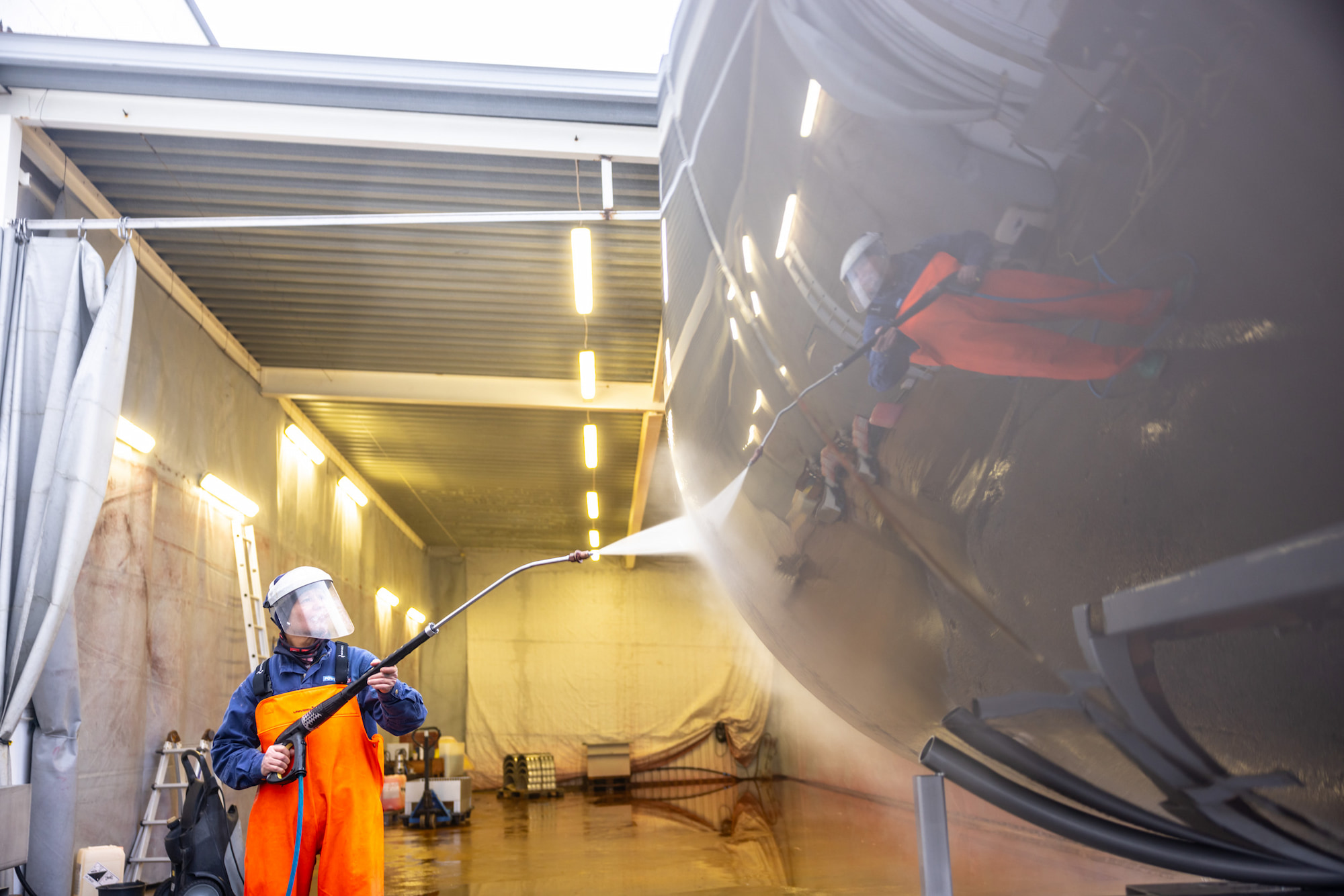Grazing and passivation
Power Heat has extensive experience in welding stainless steel. The corrosion resistance of stainless steel is a result of the passive, chromium-rich oxide film in the surface layer. During welding, more chromium than iron oxidises, resulting in the chromium content of the surface layer being lower than the underlying steel layers. This also significantly reduces the corrosion resistance.

To restore the protective oxide layer, a process called pickling is used to remove the thin layer of welding oxides and depleted chromium after welding. Typically, pickling uses a mixture of nitric and hydrofluoric acid.
In our modern pickling hall, we dip pickled smaller details and spray pickled structures up to the size of a lorry. The concrete hall has its own treatment plant with a closed water recycling system. No water from the hall goes down the drain, but is purified and reused as rinsing water.
